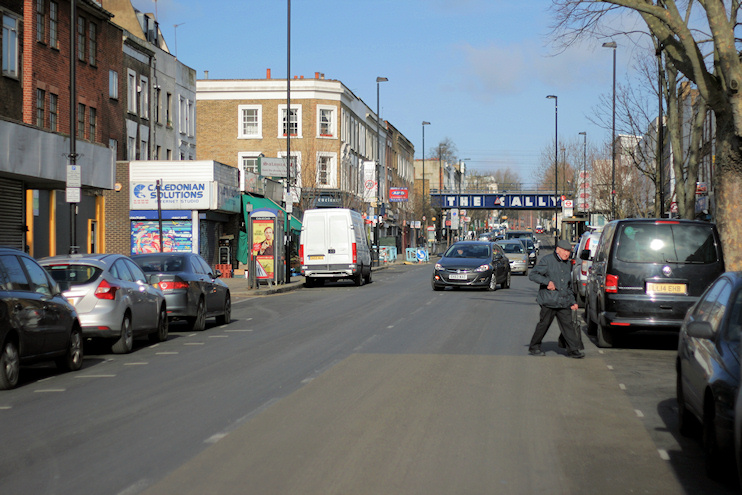Caledonian Road
Caledonian Road, Islington
The Cally (as locals call it) is a characterful north-south route running for a mile through the western side of Islington

In 1826 a company was formed to build a road from King’s Cross to the Holloway Road. Originally named Chalk Road, it ran through the open Copenhagen Fields for most of its length. In 1861 it was renamed Caledonian Road, after the Royal Caledonian Asylum, founded in 1815, which had moved to Copenhagen Fields in 1827. The asylum cared for “the children of soldiers, sailors and mariners, natives of Scotland, who have died or been disabled in the service of their country; and the children of indigent Scotch parents residing in London, not entitled to parochial relief.” Like the Reedham Asylum near Purley, the building has gone but its purpose survives in the form of a charitable trust.
Terraced houses were built for the middle classes in the 1850s but these soon slid downmarket, often with more than one family occupying each property.
Pentonville Prison was built on land to the south of the asylum in 1842. The Great Northern Hospital stood on the Caledonian Road until 1884. In 1892 the first public baths in Islington, with first- and second-class facilities, were built on the hospital site. The baths were demolished and rebuilt in 1980 and are universally known as the Cally Pool.
Most decades of the 20th century saw further developments of some kind, including the construction of post-war council flats, and more housing in the 1980s, mainly at the northern end of the road. The area north-east of Caledonian Road station is the site of a massive waste recycling centre, decanted here as part of Arsenal Football Club’s relocation from Highbury to the Emirates Stadium.
Caledonian Road is home to Housmans Bookshop and to numerous alternative charities and community organisations, related to issues as diverse as gay rights and counselling, pacifism, Tibetan Buddhism, and support for prisoners’ families. There’s also a number of home improvement shops, specialising in ironwork, glass, paint and second-hand furniture.

The relative affordability of the road and its hinterland has attracted various groups of incomers in recent times, including young graduates and others who may not stay long. Nevertheless, the Cally remains a comparative rarity in today’s London: primarily a close-knit working-class community.
More than 70 per cent of the Caledonian ward’s residents live in rented accomodation, mostly council flats.
The road’s distinctive character was the subject of a BBC Two documentary in 2012, in the Secret History of Our Streets series.
In 2013 Network Rail worked with the local community to repaint the bridge across the Caledonian Road with the words ‘The Cally’. Like many other railway bridges crossing British main roads, it had previously carried an advertisement for Ferodo brake pads.
The London Canal Museum, on New Wharf Road, was built as a cold store in 1863 to preserve ice imported from Norway to make ice cream.
